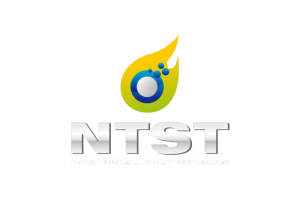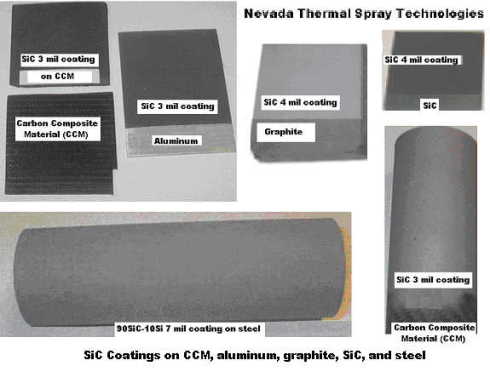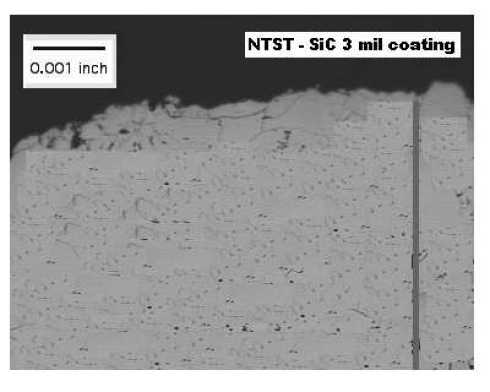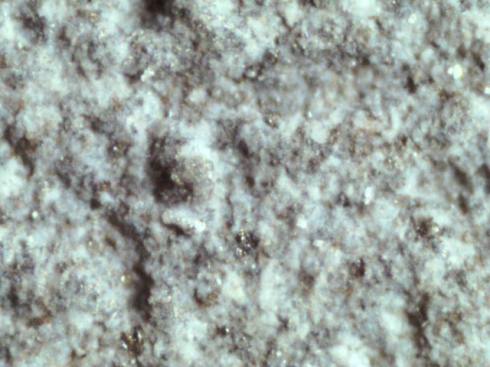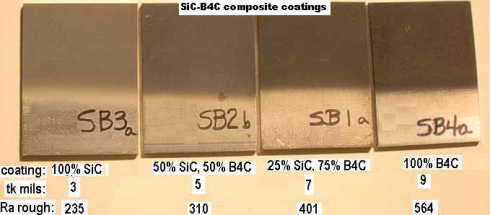NTST has developed the unique capability to fabricate pure SiC, SiC cermet (SiC + Si), and SiC-B4C composite coatings on any substrte material using
thermal spray processes. SiC is extremely difficult to fabricate as a coating due to the tendency to sublime at high temperature.
SiC benefits include low density, high strength, low coefficient of thermal expansion, high thermal conductivity, good electrical properties, high
decomposition temperature (4530 F), and excellent resistance to corrosion (i.e. alkaline and acidic). SiC is the third hardest material after diamond and boron carbide making it extremely
valuable for wear applications. SiC materials are used in over 30 industries including the aerospace, automotive, electronics, power, and chemical industries.
Carbon composite materials (CCM) are finding more and more applications in industry due to the strength, stiffness, and weight of these materials. They
must, however, be protected when in service due to the tendency of CCMs to degrade in alkaline and acidic environments and sunlight. SiC is an excellent choice for these coating applications
due to the unique properties of SiC.
SiC coatings can be used for resistance to wear. Applications include pump seal faces, shaft sleeves, and valves in the chemical, paper, power
generation, petrochemical, pharmaceutical, and mining industries. Due to the high thermal conductivity of SiC, it is an excellent choice for applications requiring substantial thermal shock
resistance and refractory heat transfer surfaces. SiC materials will perform well at high temperatures.
In general, NTST SiC coatings are dense, hard, and wear resistant. Porosity is less than 2%, hardness is 9.2 on the Mohs scale, bond strength exceeds 4000
psia, and surface roughness is 145 microinches. NTST SiC coatings can be deposited on steel, aluminum, graphite, silicon carbide, and carbon composites as illustrated in Figure 1. Figure 2
illustrates a typical photomicrograph of a SiC coating (400x). Figure 3 illustrates the as-sprayed surface morphology of a typical SiC coating (160x). Figure 4 illustrates SiC-B4C composite
coatings.

